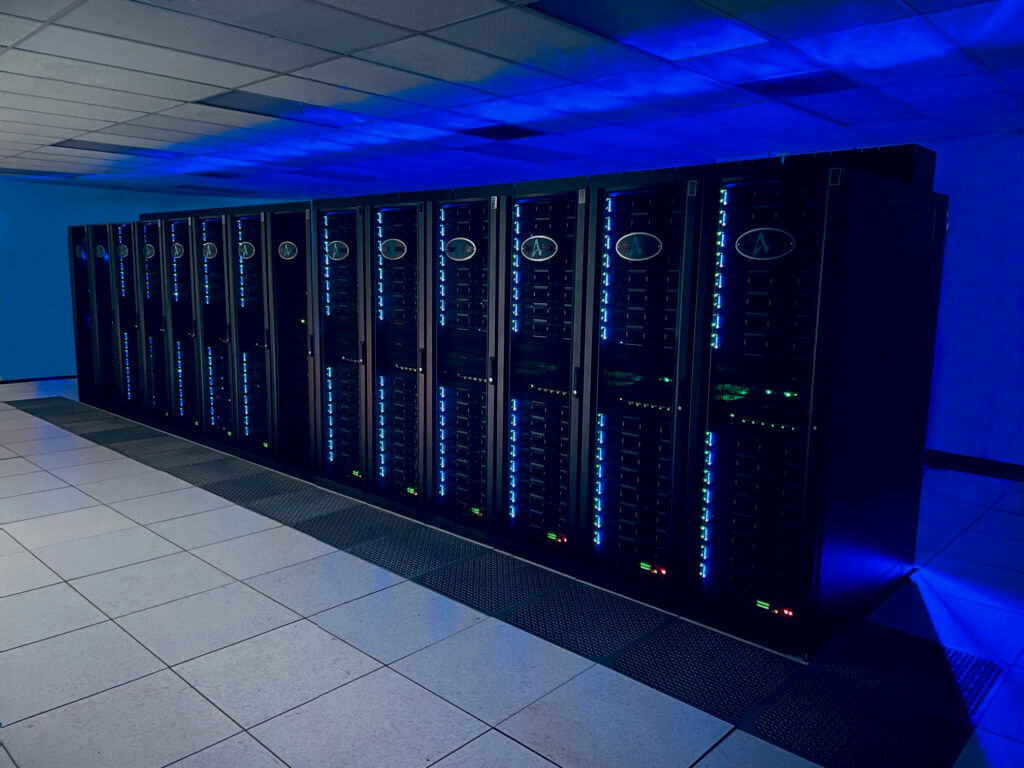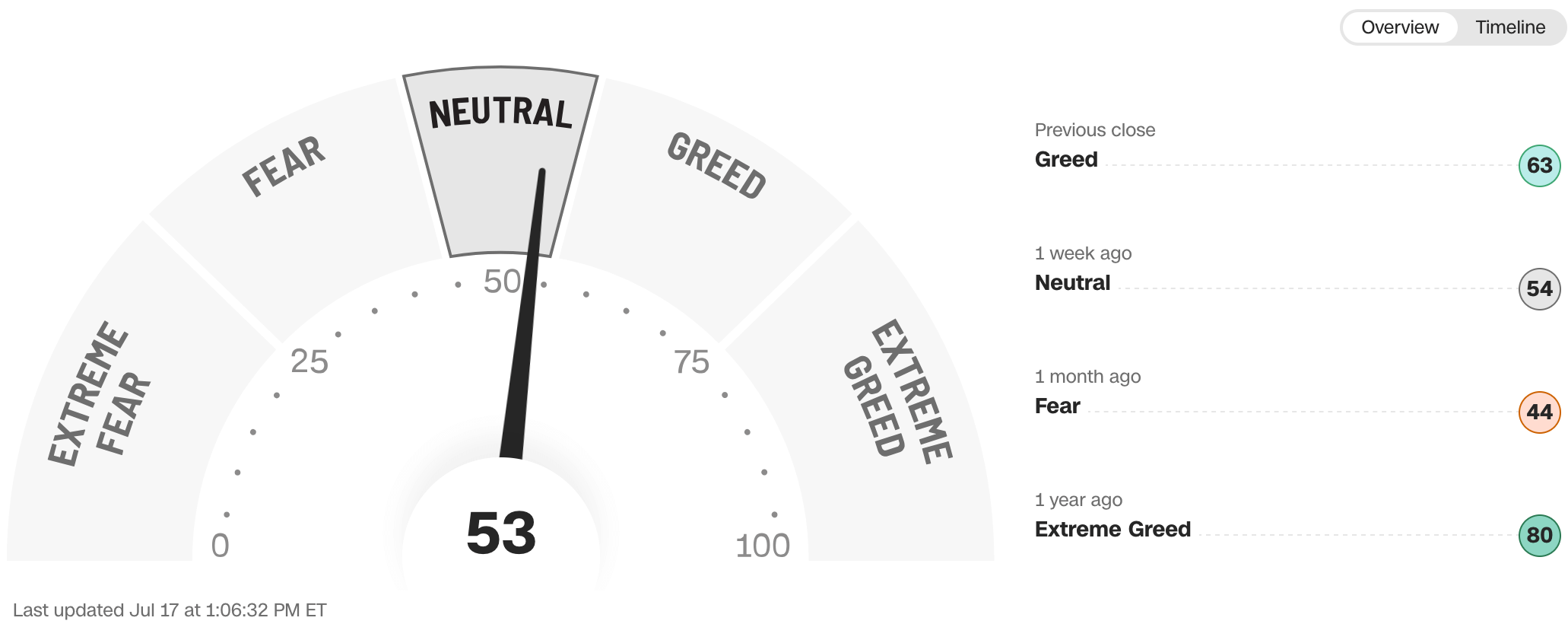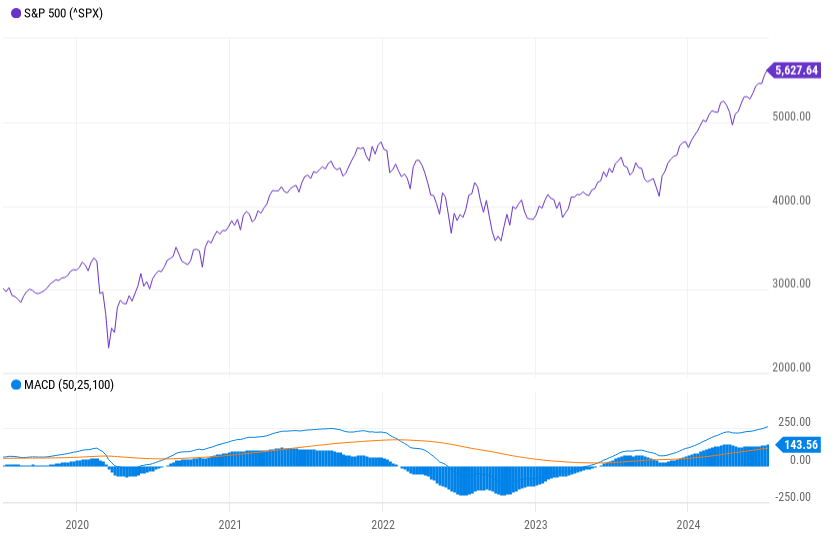Market Overview
This month’s models are now available.
We asked AI about investing in AI …
To state the obvious theme of 2024: It’s important that your portfolio have exposure to artificial intelligence. But how? We don’t pump individual stocks in this space, and you either bought Nvidia a year ago or you wish you did. Now that the easy money has been made, what next?
Rather than rely on our own, carbon-based faculties, we decided to let OpenAI’s ChatGPT have a whack at it.
“Write a 1,000-word article on how to select stocks based on their exposure to AI,” we asked its Stock-Market Analyst GPT module. “Without recommending particular securities, present investment themes related to both first and second-order effects.”
It complied, and the article it slapped together was accurate and informative, if a bit repetitive and too deep in the weeds. So we asked it, “How good a job do you think you did?”
“Overall, the article is structured to offer a balanced perspective, combining investment themes, evaluation criteria and risk considerations,” it replied. “If there are specific areas you think could be improved or if there are additional points you'd like to see covered, please let me know!”

Of course it’s advising you to buy AI stocks. It’s biased. Credit: NASA
At least it didn’t attempt to flirt. (Here’s the full text ChatGPT sent back to us.)
It’s still early days for generative AI, the type which produces content in response to prompts. The summary it gave us helped structure our analysis of second-order effects, but that’s about it. The only source it relied on was Investopedia, so we had to go back and do all the research anyway.
We can’t deny, though, that AI – generative and otherwise – is going to be making a big splash in the world economy, and the ripples from that splash might never stop. Even so, throwing money at every name ending in “.ai” would likely result in the same kind of bust that buying anything ending in “.com” did a generation ago. So let’s take a look at how AI might realistically affect your investment choices.
First-order effects
Some industries are going to benefit immediately from the AI boom. Technology companies are top-of-list.
But there are different kinds of tech companies. They might be focused on hardware, software or facilities. The hardware companies make the AI-specific semiconductors and other components for processing or storing data. Nvidia, of course, plays in this space, but it has its competitors. This group also includes the foundational levels of operating systems and management software that connects the applications to the bare metal.
Then there are actual AI platforms. OpenAI, the private company that started the generative AI boom with its free Chat GPT offering, is one example. There are other cloud-based, so-called “AI-as-a-Service” (AIaaS) platforms out there but for now they’re all pre-IPO according to eWeek.
That doesn’t mean you can’t buy into AI at all. Such mega-cap players as IBM, Amazon, Microsoft and Google have infused AI into their offerings already and are funding much of the research. Apple is playing catch-up, but they’ve never put much stock into being first-to-market. Amazon, Microsoft and to a lesser degree IBM all play in the cloud hosting market, renting out their data center space as well as their computing and storage power to companies. Demand for this service could likely increase with the AI market.
Separately, such enterprise software developers as ServiceNow, Salesforce or Oracle imbue their products with AI. Motley Fool also points to such cybersecurity companies as CrowdStrike and Palantir which are directly exposed to the machine learning space.
You might want to go back to our March article on tech stocks to learn a little more about some of these names. And, if you go back another month, you’ll see what we had to say about self-driving cars – which are basically AI on wheels.
Second-order effects
“Several industries are being revolutionized by AI, leading to significant operational improvements and cost reductions,”
according to our disembodied friend. It lists three sectors in particular that could benefit most from AI as it becomes more pervasive:
- Healthcare,
- Financial Services and
- Manufacturing.
The top AI use case for the Healthcare sector revolves around medical imaging analysis.
“With AI-powered systems, medical professionals can enjoy the benefits of an automated system for recording medical documents, streamlining the administrative aspects of their work,” according to software developer Glorium Technologies. “Moreover, AI assists in making more accurate diagnoses by analyzing large volumes of data at high speed and comparing it with other studies of the same patient.”
Glorium also cites diagnosis and treatment, patient data processing, remote patient assistance and drug development as important use cases.
You can assume that every major Healthcare company actively incorporates AI in its processes. Nasdaq’s blog highlights six names in the sector that serve as “under-the-radar” paths to investing in AI.
Additionally, a few domestic, publicly traded Information Technology players specialize in serving them. Butterfly Network (NYSE:BFLY), Augmedix (Nasdaq:AUGX), and GE HealthCare (Nasdaq:GEHC) are among those listed by Medical Futurist, but please don’t take any of these references to be recommendations. The Medical Futurist article is loaded with dead links, so these are just the survivors. So far.
Turning to Financial Services, how an enterprise might use AI depends on which end of the business it’s in. For banks, AI helps most in fighting financial crime and improving online access to branch services, according to Intel. Capital markets players benefit from AI-assisted algorithmic trading or risk management. Meantime, AI helps insurers with claims management, fraud detection and curating recommendations for follow-on sales.
Technology-first companies that augment – or displace – legacy institutions are generally called “fintechs” or, if they specifically disrupt banks, “neobanks”. Some of the best-known fintechs include PayPal (Nasdaq:PYPL), Upstart (Nasdaq:UPST), SoFi (Nasdaq:SOFI) and Block (NYSE:SQ). You might also consider an array of ETFs that follow this niche.
The Manufacturing sector has been the leading market for technological innovation since the Industrial Revolution. In the current era, according to TechTarget, there are no fewer than 10 distinct use cases for AI on the shop floor. You can read them for yourself, but here are some of the cooler ones:
Co-worker robots, or “cobots” that can learn new tasks as they function alongside humans;
Digital twins, virtual models of real-world objects, such as airplane engines, that may then be studied for how environmental factors and regular wear-and-tear can affect performance; and
Machine-vision cameras that spot defects which human eyes can’t.
As you might gather, the automotive, electronics and aerospace industries are leading the charge and, as we noted earlier, the pharmaceutical industry is also an early AI adopter. Surprisingly, though, the food-and-beverage and consumer packaged goods industries are also keen to take advantage of this new tech. The Wall Street Journal reports that PepsiCo (NYSE:PEP), Colgate-Palmolive (NYSE:CL) and Hershey (NYSE:HSY) are fully onboard.
Should AI stand for ‘all in’?
Of course, we could probably do one of these roundups for every industry in every sector. AI is likely to wriggle into all of them eventually. Both the retail and entertainment industries deserve more attention than we have space to give them here.
Wherever you choose to focus your capital, though, the chatbot has this advice for you:
“Investors should focus on companies with a clear strategic vision for AI, strong financial health, and a commitment to innovation,”
it scraped from somebody else.
“By considering first-order effects, such as technology and software firms, and second-order effects, like industry transformation and consumer goods, investors can build a diversified portfolio poised to capitalize on the AI revolution.”
We would go one step further and remind you that no machine has any incentive to make sure you optimize your portfolio. So seek out a trusted advisor with a pulse rather than a clock speed.






